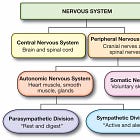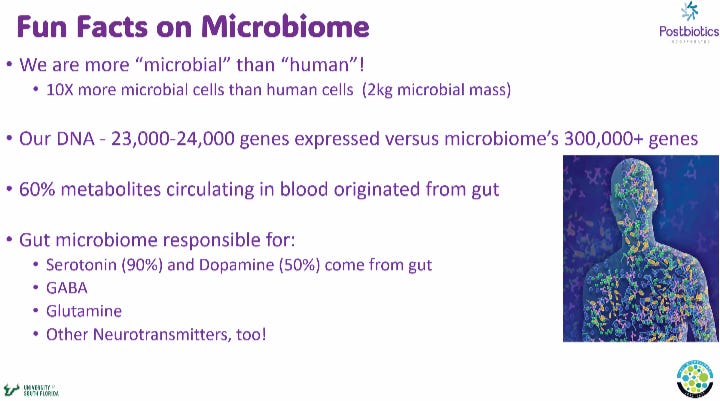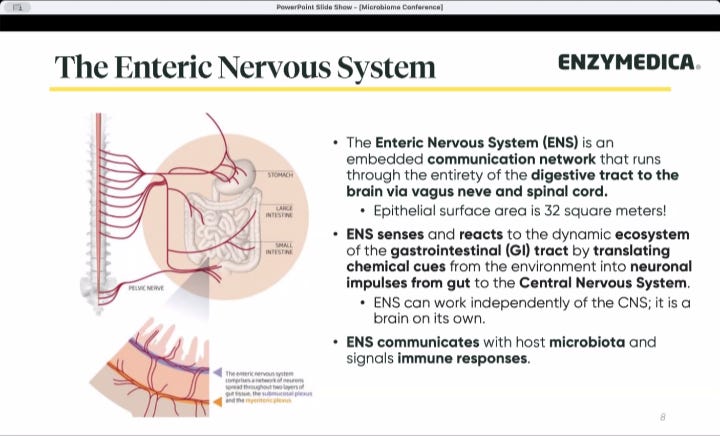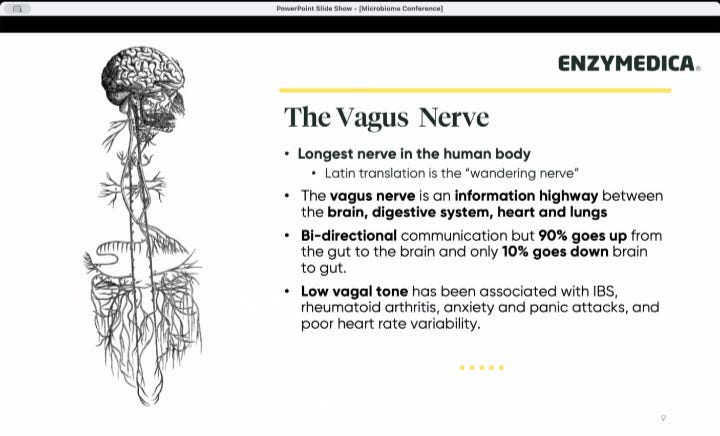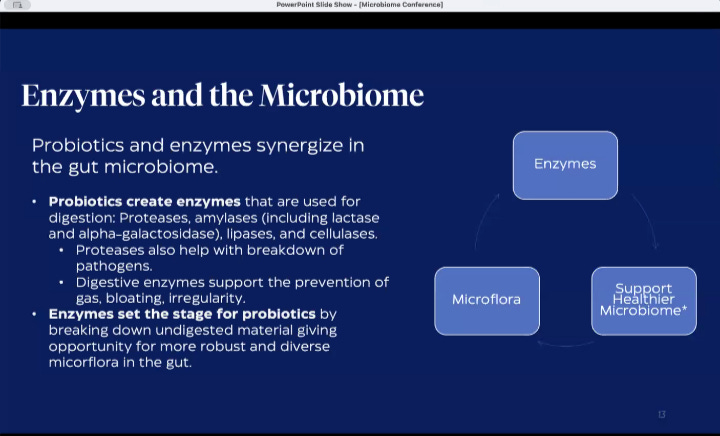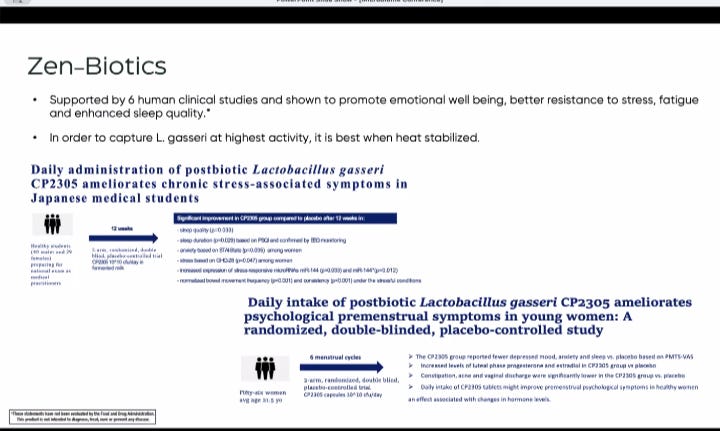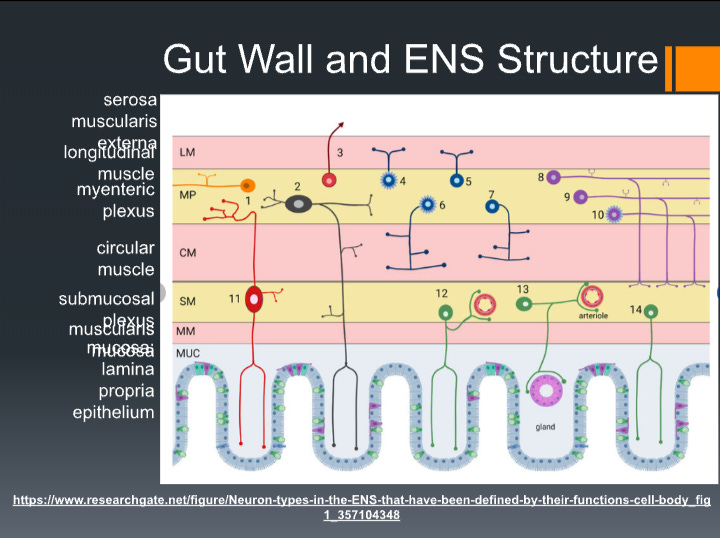Nerve cells of the ENS - our gut-brain
With webinar slides from Naturally Informed - Microbiome: Mastering the Market 2024, focusing on the Enzymedica session & their product Digest Spectrum which may help multiple food sensitivity issues.
The Enteric Nervous System (ENS) controls peristalsis, the wavelike contractions of the smooth muscles lining the intestinal walls. Having microbes in our gut is important too, as they stimulate the presence of more white blood cells which form a glial like support function for the enterocytes - the nerve cells of the ENS. This was the topic of a recent post or a few. This post will get into more detail about the similarities and differences between the ENS and CNS and has some slides from a webinar on the gut microbiome.
Addition - the link to the recording of the event is available and some of the sessions made their slides available for download. The event is about the Microbiome, but focused on product development and markets not just on benefits. It was good overall. The sessions are viewable individually. https://naturallyinformed.net/2024-ni-micro-main/2024-micro-on-demand/
This recent post in particular: ENS and our need for gut microbes to protect our intestinal lining and promote gut motility - peristalsis motion. 'Gut Feelings' a slide presentation to read, by Tetyana Obukhanych, PhD (Substack)
Also related topics:
Who should care about gut-brain health? People with the following conditions:
“What types of medical conditions or symptoms might involve the gut-brain axis?
Disorders related to the gut-brain axis may include:
Irritable bowel syndrome and functional constipation or diarrhea.
Anxiety and depressive disorders.
Infant colic - baby needs to be burped pain, but no burp comes out.
Functional dyspepsia - chronic indigestion with no obvious cause, a feeling of bloated fullness may be present.
Functional dysphagia - difficulty swallowing.
Gastroparesis - stomach muscle dysfunction leading to food not leaving the stomach.
Anismus - pelvic floor dysfunction, may be caused by, or cause constipation.
Chronic stress.
Chronic fatigue. *Fatigue from anemia of chronic inflammation benefits from vit. C and iron chelators/zinc ionophore herbals like EGCG, quercetin, artemisinin, black seed oil, oregano essential oil, others.
Neurodevelopmental disorders, like autism.
Neurodegenerative disorders, like Parkinson’s disease.
Nerve-related pain disorders, like multiple sclerosis.” (my.clevelandclinic.org)
The Central Nervous System (CNS) includes the brain and spine, and cells from the CNS are involved in the control of our esophageal muscles and our stomach to some extent. Our sphincter at the other end of the GI tract also has CNS controls - we can choose where and when we want to defecate during normal health. Seeking privacy would be a survival mechanism to avoid being caught by a predator.
“The relative roles of the ENS and CNS differ considerably along the digestive tract.
Movements of the striated muscle esophagus are determined by neural pattern generators in the CNS. Likewise the CNS has a major role in monitoring the state of the stomach and, in turn, controlling its contractile activity and acid secretion, through vago-vagal reflexes.
In contrast, the ENS in the small intestine and colon contains full reflex circuits, including sensory neurons, interneurons and several classes of motor neuron, through which muscle activity, transmucosal fluid fluxes, local blood flow and other functions are controlled.
The CNS has control of defecation, via the defecation centers in the lumbosacral spinal cord.
The importance of the ENS is emphasized by the life-threatening effects of some ENS neuropathies. By contrast, removal of vagal or sympathetic connections with the gastrointestinal tract has minor effects on GI function. Voluntary control of defecation is exerted through pelvic connections, but cutting these connections is not life-threatening and other functions are little affected.” (Furness, et al., 2014) *Bullet points added by me.
Similarities between the ENS and CNS (Brave AI & selected excerpts)
The enteric nervous system (ENS) is often referred to as the “second brain” due to its complexity and autonomy. Despite being a peripheral nervous system, the ENS shares many similarities with the central nervous system (CNS), including the brain.
Neuronal structure and organization: Both ENS and CNS neurons have similar structures, including cell bodies, dendrites, axons, and synapses. The ENS neurons are organized into ganglia, similar to the way CNS neurons are organized into brain regions.
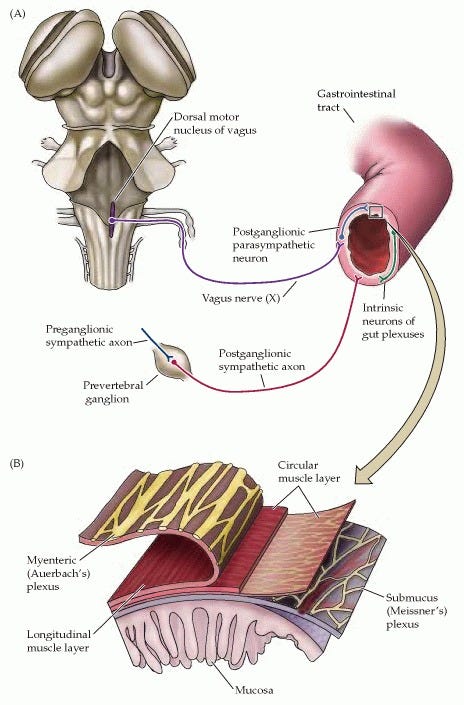
A few slides from a webinar - by Naturally Informed - ‘Microbiome: Mastering the Market 2024’:
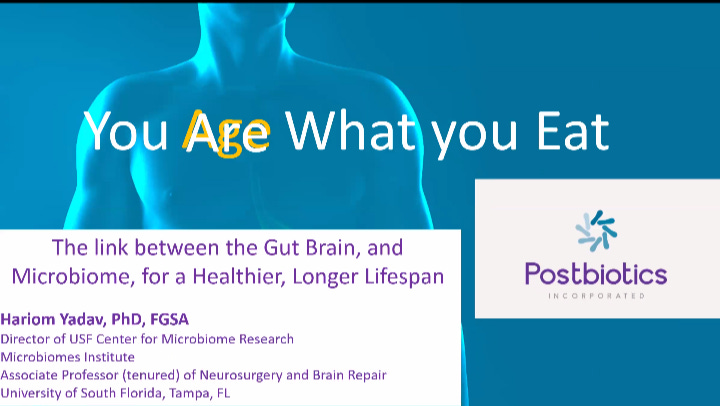
Switching to slides from the Enzymedica presentation.
The Vagus Nerve is the super-highway between the brain, heart, lungs, and the nerves in the gut. Ninety percent of the information being transferred goes up from the gut to the brain and only ten percent goes down from the brain to the gut. When the vagal nerves aren’t working as well, less information traveling through, then IBS, rheumatoid arthritis, anxiety and panic attacks may be more likely and the heart rate may be more variable. (Enzymedica)
Enzymes and improving digestion is important prior to flooding the gut with more bacteria in a supplement product or fermented food - it might just promote more growth of negative species or an overgrowth due to poor digestion of food leaving a smorgasbord of plenty. Improving digestion helps reduce excess food availability and restore balance to the microbiome species.
For digestion in the stomach - think about acidity too: Betaine-HCl or 1-2 tablespoons of apple cider vinegar or lemon or lime juice with meals can help improve stomach acidity and digestion in the stomach. This can become a daily need as we age because we tend to make less. Adequate table salt, sodium chloride, in the diet is important for us to be able to make our own stomach acid too. Enzymedica offers Apple cider vinegar gummies - the label says that 2 gummies provide 1 fl oz equivalent = 4 tablespoons, so only one per meal is needed. (enzymedica.com)
Digest Gold has been a product of Enzymedica for many decades with good consumer results, (product page). Digest Spectrum is a newer product that specifically helps with the gluten/casein/soy issues that may be present in people on the autism spectrum by including the enzyme DPP-IV, (product page).
DPP-IV: What it is and how it Works, (Enzymedica/blog)
Meet Digest Spectrum, with Enzymes for All Major Food Intolerances*, (Enzymedica/blog)

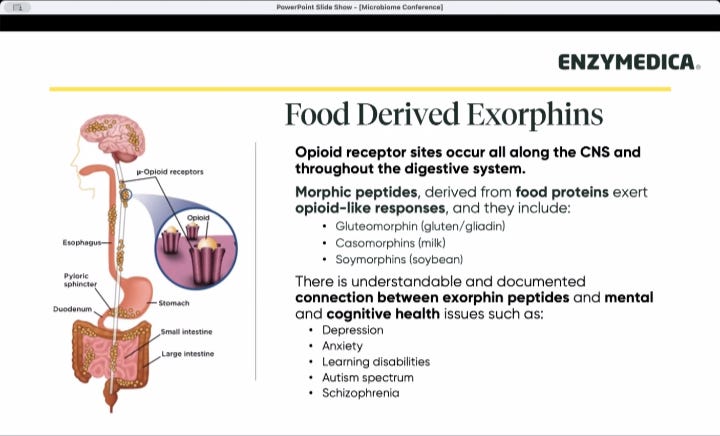
Zen-Biotics is a term used for a specific postbiotic ingredient derived from heat stabilized Lactobacillus gasseri DP2305. The product was found to improve stress related symptoms in Japanese Medical students. (Nishida, et al., 2019)

I didn’t share slides from this session, but it was quite good and Jill offered a free MCAS guide in the chat notes: https://www.jillcarnahan.com/MCAS/
The guide is also one of the bonuses with purchase of Dr Carnahan’s book ‘Unexpected’, https://readunexpected.com/
Similarities & Differences between the Central and Enteric Nervous Systems:
Nerve cells of the brain and the gut are similar in structure with a cell body, dendrites, axon connecting tubules and synapses connecting the axon of one nerve cell with the dendrite of another. The nerve cells of the CNS and ENS are organized into groups of cells called ganglia. The ENS is sometimes called the “second brain” because it is complex, has numerous cells and can function independently from the brain in our skull.
Some Key Differences between the ENS and CNS:
Number of neurons: The ENS contains approximately 500 million neurons, which is more than the number of neurons in the spinal cord (100 million) and only slightly fewer than the number of neurons in the brain (1 billion).
Organization: The ENS is organized into two main plexuses (myenteric and submucosal) and numerous smaller ganglia, whereas the brain is organized into different regions, such as the cerebrum, cerebellum, and brainstem.
Synaptic connections: The ENS has a unique pattern of synaptic connections, with many neurons communicating with each other through local circuits, whereas the brain has a more complex pattern of synaptic connections, with neurons communicating with each other over long distances.

Enteric Nervous System: “Its neurons are grouped in thousands of ganglia (group of neurons) that are divided into myenteric and submucosal.
The myenteric ganglia are organised in a network around the gut, which spans the length between the upper oesophagus and the internal anal sphincter and contains mostly motor neurons.
The submucosal ganglia are localised in the small and large intestine with most of the primary afferent sensory neurons.
The enteric nervous system neurons can be classified in three groups: intrinsic primary afferent neurons, interneurons and motor neurons.
The intrinsic primary afferent neurons detect chemical and mechanical stimuli from ingestion, usually food and drink.
The motor neurons in the enteric nervous system are responsible for coordinating peristalsis, rhythmic muscle contractions that move material along the digestive tract.” Enteric nervous system - Queensland Brain Institute - University of Queensland
“Neurons within submucosal ganglia can be classified as intrinsic primary afferent neurons (IPANs), interneurons, secretomotor and vasodilator neurons (161,162). Myenteric ganglia also contain motor neurons, innervating the longitudinal and circular muscle layers, and secretomotor neurons, which project to the mucosa (163). With these neural components the enteric nervous system (ENS) can elicit neural reflexes that control and coordinate motility, secretion, and blood flow. The nervous system of the gut is capable of integrative functions independent of the central nervous system. The human GI system, deprived of CNS innervation, is capable of coordinated digestion, motility, secretion, and absorption. The neurons that control bowel functions are located entirely within the gut, and for this reason the ENS is sometimes called the “little brain” (164).”
Significance of Sensory Neuropeptides and the Immune Response, Hanneke P.M. Van der Kleij, John Bienenstock, in Psychoneuroimmunology (Fourth Edition), 2007, Viewable at: Enteric Nervous System - an overview | ScienceDirect Topics
Similarities between the nerve cells of the ENS and CNS:
Neurotransmitters and neuromodulators: Both ENS and CNS neurons use similar signaling chemicals such as acetylcholine, dopamine, serotonin, and norepinephrine, to communicate, but the ratios of which neurotransmitters are used more varies between the two systems.
Synaptic transmission: Both ENS and CNS neurons use synaptic transmission to communicate. Neurotransmitters released from the presynaptic terminal triggers a response in the postsynaptic neuron. - Cannabinoids are involved in reuptake of the signaling chemicals, so a signal doesn’t fire forever. (Castillo, et al., 2012)
Neuroplasticity: Both ENS and CNS neurons exhibit neuroplasticity, allowing them to adapt and change in response to experience and learning. - Cannabinoids are involved in synaptic signaling and remodeling of synaptic connections - needed to learn or forget information. (Castillo, et al., 2012)
Autonomy: Both ENS and CNS neurons can function independently, with the ENS able to regulate gut function without input from the CNS.
Diversity of neurons: Both ENS and CNS have a diverse range of neuron types, each with unique functions and properties.
Glia: Both ENS and CNS have glial cells, which provide support and maintenance functions for neurons. - The glial cells of the ENS are a little different though, being derived from immune cells, and their presence is dependent on microbiome signaling a need for immune cells to be on patrol. Immature cells are promoted into maturing into types of cells that are needed based on the signaling from the surrounding environment. See the previous post:
Development: Both ENS and CNS neurons develop from neural crest cells and migrate to their final positions through a process of migration and differentiation.
Communication with other systems: Both ENS and CNS neurons communicate with other systems, such as the sympathetic and parasympathetic nervous systems, to regulate various physiological processes.
These similarities highlight the remarkable complexity and autonomy of the enteric nervous system, which is often referred to as the “little brain” due to its ability to function independently of the CNS.
AI-generated answer. Please verify critical facts. Learn more
Disclaimer: This information is being provided for educational purposes within the guidelines of fair Use and is not intended to provide individual health care guidance.
Reference List
(Castillo, et al., 2012) Castillo PE, Younts TJ, Chávez AE, Hashimotodani Y. Endocannabinoid signaling and synaptic function. Neuron. 2012 Oct 4;76(1):70-81. doi: 10.1016/j.neuron.2012.09.020. PMID: 23040807; PMCID: PMC3517813. https://www.ncbi.nlm.nih.gov/pmc/articles/PMC3517813/
(Furness, et al., 2014) Furness JB, Callaghan BP, Rivera LR, Cho HJ. The enteric nervous system and gastrointestinal innervation: integrated local and central control. Adv Exp Med Biol. 2014;817:39-71. doi: 10.1007/978-1-4939-0897-4_3. PMID: 24997029. pubmed.ncbi.nlm.nih.gov
(Nishida, et al., 2019) Nishida K, Sawada D, Kuwano Y, Tanaka H, Rokutan K. Health Benefits of Lactobacillus gasseri CP2305 Tablets in Young Adults Exposed to Chronic Stress: A Randomized, Double-Blind, Placebo-Controlled Study. Nutrients. 2019 Aug 10;11(8):1859. doi: 10.3390/nu11081859. PMID: 31405122; PMCID: PMC6723420. https://www.ncbi.nlm.nih.gov/pmc/articles/PMC6723420/
(Purves, et al., 2001) Purves D, Augustine GJ, Fitzpatrick D, et al., editors. Neuroscience. 2nd edition. Sunderland (MA): Sinauer Associates; 2001. The Enteric Nervous System. Available from: https://www.ncbi.nlm.nih.gov/books/NBK11097/
(Rao and Gershon, 2016) Rao, M., Gershon, M. The bowel and beyond: the enteric nervous system in neurological disorders. Nat Rev Gastroenterol Hepatol 13, 517–528 (2016). https://doi.org/10.1038/nrgastro.2016.107 https://www.nature.com/articles/nrgastro.2016.107






